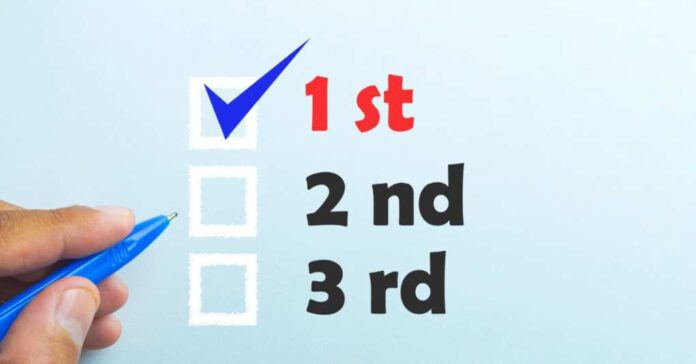
Democrats will stop at nothing to stack the deck in their favor for elections. After all, it’s far easier to cheat when the system has already given you a leg up over your challengers.
The 2020 election saw a frenzy of last-minute, and many argue unconstitutional, changes to elections under the guise of “public health safety.” A surge in mail-in voting marked an unprecedented shift in voting behavior, with nearly 43% of all voters choosing to cast their ballots by mail, a record high. States eliminated strict requirements for absentee voting and implemented measures such as ballot drop boxes.
Furthermore, several states sent ballot applications to all “active” registered voters, dead or alive. Three years after the election, fraud and mismanagement of voter rolls are still being uncovered.
Now, Democrats are encouraging a new electoral system, guaranteed to muddy the waters and silence voters’ voices.
This is Ranked Choice Voting, and it’s more confusing than setting your car’s clock after Daylight Savings Time.
Ranked Choice Voting (RCV) is already an alternative to the traditional winner-takes-all system in certain cities and states across the United States. For instance, in Maine and Alaska, it is used for state primary, congressional, and presidential elections. Locally, 47 cities, including Salt Lake City, Seattle, and Cambridge, have adopted RCV for their elections.
Unlike the standard method, where voters choose only one candidate, RCV allows them to rank their preferences. In this system, voters list their preferred candidates in order, from their top choice to their least favored.
If a candidate receives more than 50% of the first-preference votes, they are the winner. However, if no candidate achieves that majority, the candidate with the fewest first-preference votes is eliminated, and their votes are redistributed based on the second-choice preferences of their supporters. This process continues until a candidate surpasses the 50% threshold and is declared the winner.
Supporters of RCV advocate for its ability to promote fairness by allowing voters to express their preferences without fear of “wasting” their votes. Additionally, they argue that RCV reduces negative campaigning and ensures winners have majority support. Conversely, critics raise concerns about the complexity of RCV, the costs associated with its implementation, and the potential for outcomes where a candidate with fewer first-preference votes emerges victorious.
How could this happen? Meet Alex, Brent, and Clint, fictitious candidates running for president in a fictional state. And hang on, folks, this will get confusing.
Voter preferences show that 40% ranked Alex as their first choice, 35% chose Brent, and 25% preferred Clint as their first choice. In the first round of voting, Alex leads with the most first preference votes (40%) but falls short of a majority (50% or more). Consequently, with the fewest first-preference votes (25%), Clint is eliminated. His votes are now ranked for the second choice, with his second-choice votes now given to the second-choice winners.
Next, let’s say Brent earned 55% of Clint’s second-choice votes, but Alex only gained 10%. Brent emerges as the winner in Confusion, holding the majority after the redistribution despite having fewer first-preference votes than Alex. Critics of this ranked-choice voting (RCV) system argue that Alex, who garnered the most first-preference votes, should have won.
The concept means that “one person, one vote” is no longer in play. It removes challengers from the race and redistributes the eliminated candidates’ votes to those who remain.
Currently, liberal special interest groups are orchestrating an extensive nationwide campaign to promote RCV in nearly every state. These groups have employed lobbyists, established astroturf activist organizations, and funded state-level ballot initiatives. More than half of the states, including battlegrounds like Arizona and Nevada, are considering proposals to switch to RCV.
One of the most popular forms of RCV is called “Final Five Voting.” In this system, traditional party primaries are replaced with a preliminary election where all candidates compete in an open contest regardless of party affiliation. This approach eliminates the conventional choice between Republicans and Democrats, potentially obliterating one party from the picture.
States that have used RCV in the past are abandoning it in droves. Contrary to the promises of fairness, transparency, and equality in voting, studies show that RCV results in negative campaigning, increased funding for candidates from “dark money” groups, a decreased turnout, and harm to minority voters.
To Democrats, this convoluted voting scheme makes perfect sense. But if Americans are too stupid to know how to get voter IDs, how will they ever learn to vote in this complex system? Democrats hope they will just stay home.















